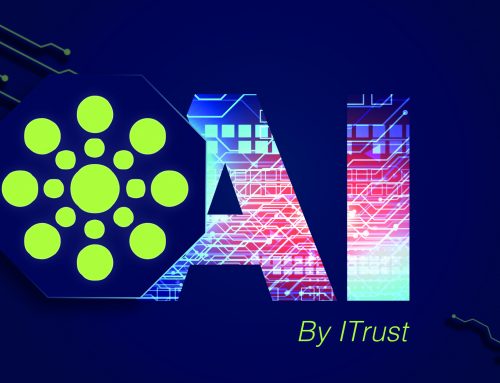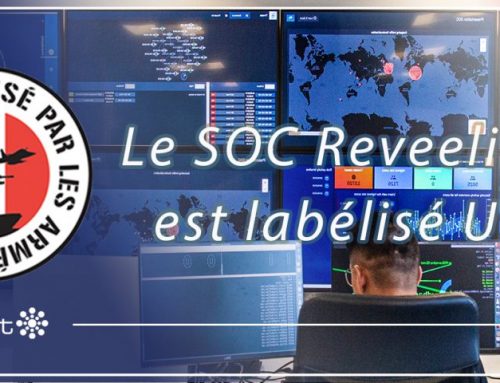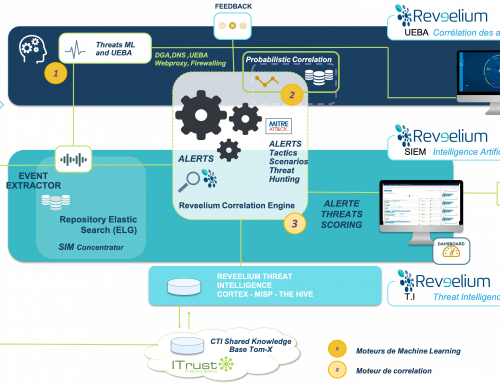Today’s IT security teams must manage data from a large and increasingly complex network that spans multiple clouds and software-as-a-service (SaaS) applications, a growing number of sites with new SD-WAN connections, connected objects (IoT), OT systems, workers and mobile devices, and now dozens or even hundreds of home offices.
XDR, a necessary technology today
To keep up with the volume, velocity and variety of data, Extended Detection and Response (XDR) technologies are needed to collect and process security data at scale in hybrid IT environments. SIEM has been doing this for many years, but marketers have coined a new term: XDR, which is similar to SIEM (in fact it is the same thing). Moreover, as EDRs are not able to process data outside of endpoints, Windows and Linux, XDR makes it possible to explain that we are going to look for data sources elsewhere than on these endpoints. XDR is therefore the natural evolution of EDR.
XDR definition: What is extended detection and response?
Extended Detection and Response or XDR is a new holistic approach to threat detection and response that provides comprehensive protection against cyberattacks, unauthorized access and malicious use. According to Gartner, XDR is “a SaaS-based security threat detection and incident response tool that natively integrates multiple security products into a cohesive security platform that unifies all components. In fact, this is nothing new as it is the work of a SIEM with the addition of endpoint, Windows and Linux log data to justify the new term.
The main benefits of Extended Detection and Response (XDR)
XDR allows an organisation to go beyond traditional detection controls by providing a simplified, holistic view of threats across the technology landscape. XDR provides real-time, actionable threat intelligence for better and faster results. The 3 main benefits of Extended Detection and Response (XDR) are :
- Improved protection, detection and response capabilities
- Improved staff productivity
- Reduced total cost of ownership for effective detection and response to security threats.
The XDR solution promises to consolidate multiple products into a single, consistent, unified security incident detection and response platform.
What is the difference between XDR and traditional SIEM?
Traditional SIEMs are a core component of security operations centre (SOC) technology tools. They collect log data from dozens or hundreds of security tools, correlate it and generate meaningful alerts. While traditional SIEMs are limited in their detection, “new generation” SIEMs are boosted with UEBA, threat intelligence. In this case, they can be more effective than XDRs. As you can see, there is a fine line between modern SIEMs and XDR.
We could simplify by saying that generally an XDR is also equipped with EDR and in this case it is capable of immediate remediation. But beware of SIEMs such as Reveelium, for example, which are also capable of performing remediation.
What a lot of barbaric words! The cyber business has always made a simple field more complex:
- The more data we recover from different sources (SIEM or XDR) the better the protection,
- Remediation in the event of an incident can be done by agents on the stations (EDR)
- Event management is often associated with a SOAR (we will talk about this in another post)
Let’s remember that the best protection consists of different detection engines: Correlation, UEBA and Threat intelligence. And in this field, marketing promises are rarely kept.
What is the link between XDR and SIEM?
XDR can complement traditional SIEMs to add some missing capabilities:
Interaction with security tools: not only to pull data on events, but also to enable defensive capabilities to deal with those events (remediation).
What is the difference between EDR and XDR?
XDR is a logical evolution of endpoint detection and response (EDR) solutions into a primary incident response tool. Before discussing the differences between these two solutions, let’s look at their similarities:
EDR vs XDR: key similarities
Both EDR and XDR solutions are designed to replace traditional, reactive approaches to cyber security. As a result, EDR and XDR solutions are similar in several ways, including a :
Preventive approach:
Traditional security solutions often focus on detecting and fixing ongoing threats. EDR and XDR solutions attempt to prevent security incidents by collecting in-depth data and applying data analysis and threat intelligence to identify threats before they occur.
Rapid threat response:
Both EDR and XDR support automated threat detection and response. This allows an organisation to minimise the cost, impact and damage caused by a cyber attack by preventing or remediating it quickly.
Threat hunting: Threat hunting enables proactive security by allowing analysts to identify and remediate potential security issues before they can be exploited by an attacker. EDR and XDR provide deep visibility and easy access to data, which facilitates threat hunting efforts.
EDR vs XDR key differences
Despite their similarities, EDR and XDR take different approaches to cybersecurity. Here are 2 of the main differences between EDR and XDR:
Focus: EDR focuses on endpoint protection, providing deep visibility and threat prevention for a particular device. XDR, on the other hand, takes a broader view, integrating not only endpoint security, but also cloud security, email and other solutions. Just like SIEM.
Solution integration: EDR solutions can provide “best in breed” protection for endpoints, and an organisation may be able to integrate them manually with a set of point solutions. XDR is designed to provide integrated threat visibility and management within a single solution, greatly simplifying an organisation’s security architecture.
What is the difference with Managed Detection and Response (MDR)?
Managed Detection and Response (MDR) is endpoint security “as a service”. This service manages EDR security technologies for organisations, which includes detection and response. The service activities typically include :
Continuous monitoring
Threat hunting
Threat and alert prioritisation (SOAR)
Managed investigation services
Guided response
Managed remediation
The main benefit of an MDR is that it allows threats to be identified quickly and their impact mitigated without the need for additional in-house staff. This is particularly important given the global shortage of highly skilled cybersecurity professionals and the resulting skills gap, especially in the protection of cloud-based systems and assets.
EDR, MDR, XDR: to summarise
EDR is the basic threat detection and monitoring tool for Windows and Linux terminals. Antivirus, which is essential, nowadays only detects 4% of attack techniques. EDR covers a little more than 40% of the detection of Mitre attack techniques. This solution uses software agents or sensors installed on terminals to capture data. This data is then sent to a centralised platform for analysis.
The MDR is essentially an EDR purchased as a service. This service manages endpoint security and focuses on threat mitigation, elimination and remediation with a dedicated and experienced security team.
XDR extends the capabilities of EDR to protect more than just endpoints and recover data from firewalls, proxies, DNS, etc. …. The XDR solution “scales” across the infrastructure, streamlining the ingestion, analysis and flow of security data across an organisation’s security tools to improve visibility of hidden and advanced threats and unify response.
XDR then acts as a SIEM. When purchased as a managed solution, XDR also provides access to experienced threat hunting, threat intelligence and analysis experts.
Which solution should your organisation choose?
Every organisation’s IT security needs are different. If security is imperative, it is important to choose a security tool that provides the right level of coverage based on the company’s risk profile.
Choose the EDR solution if your organisation
- wants to improve its posture and level of endpoint security beyond anti-virus.
- has an Infosec team capable of acting on the alerts and recommendations produced by the EDR solution
- is in the early stages of developing a comprehensive cybersecurity strategy and wants to lay the foundation for a scalable security architecture.
Choose the MDR or MSSP solution if your organisation
- does not have a Cyber team
- Does not have a mature detection and response programme that can quickly remediate advanced threats with existing tools or resources.
- wants to introduce new skills and gain maturity without hiring additional staff
- Struggles to fill skill gaps in the IT team or to attract highly skilled and specialised talent
- Wants protection that keeps them up to date with the latest threats to organisations.
Choose XDR or Next Generation SIEM if your organisation
- wants to improve advanced threat detection
- wants to accelerate multi-domain analysis, investigation and threat hunting from a single console
- suffers from alert fatigue in a disconnected or siloed security architecture
- wants to improve response time to security alerts and threats
- wants to improve the return on investment of all its security tools.
To understand the different detection capabilities of different technologies, a study tells us more: Who is the winner? The MITRE Matrix-based ranking of the best protection technologies
To conclude, the solution that offers maximum protection remains the implementation of a UEBA TH SIEM with an EDR.
Discover the ITrust XDR solution
Thanks to its 15 years of experience in cybersecurity, ITrust offers you a unified XDR solution capable of covering 90% of MITRE Attack threats. As a result, your teams gain in effectiveness and efficiency. Prevent, detect and respond to advanced threats through automation, machine learning and Threat Intelligence.





